Celebrities
Romance comics catered to a young teenage audience. In order to relate to their audience, comics would appeal to popular culture. The following is a display of six romance comic book covers that involve celebrities, real and fictional. They include interviews, stories referencing celebrities, and stories with celebrities as characters.
Abigail Wren, Curator
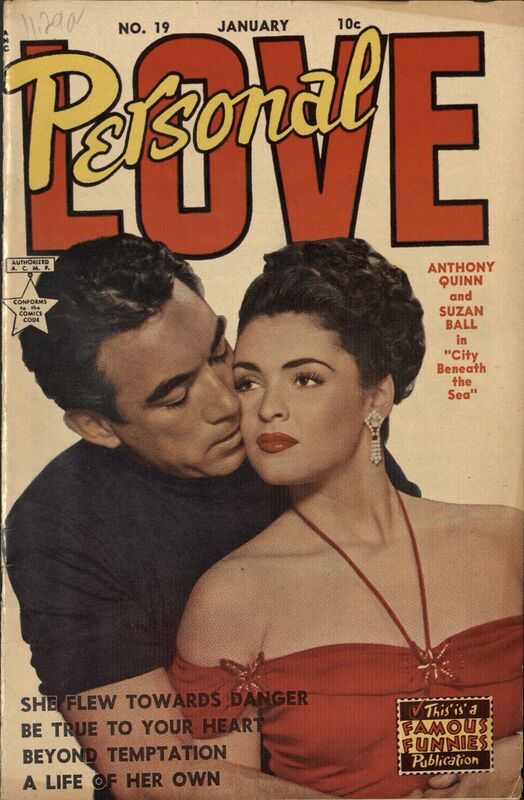
Personal Love. No. 19, Famous Funnies, 1953.
The cover features promotional image for the film, “City Beneath the Sea” (1953) starring Academy Award winning actor, Anthony Quinn and new Hollywood starlet, Suzan Ball. The issue contains profiles on both actors. The piece on Suzan Ball emphasizes aspects of her lifestyle and personality that make her relatable to the average young woman:
"She confesses to hating parsnips, nightclubs and having to dress for what she terms ‘fussy’ clothes for parties.”
"She does her own cooking, washing and ironing and she claims she can iron a blouse as well as the experts.”
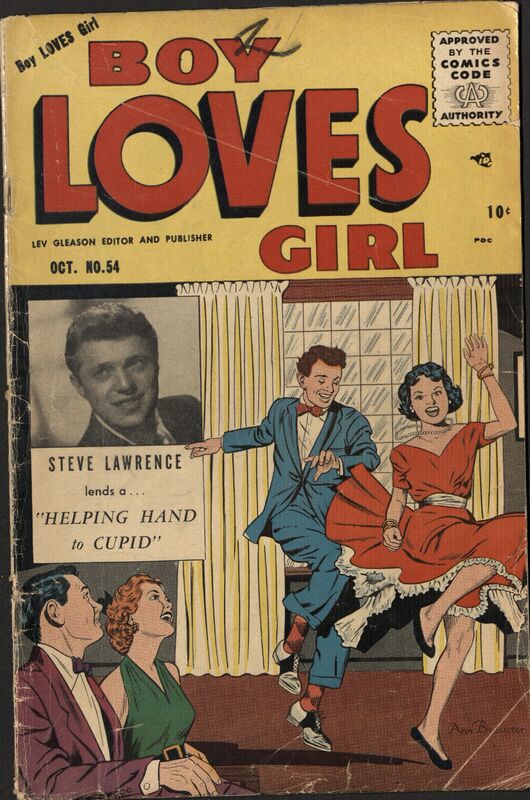
Boy Loves Girl. No. 54, Lev Gleason, 1955.
In the wacky story, Steve builds up his back-up musician, Pete’s confidence so he can ask out his crush. When the confidence goes to Pete’s head and ruins his chances with his crush, Steve must act as “cupid” to bring the two lovers together.This is an example of a post-Code romance comic book. The jolly dancing teenagers and benevolent intervention from a respectable celebrity projects a wholesome and mainstream view of young love as befits the 1950s. The cover art is by Ann Brewster, one of the female contributors to comic book art during its Golden Age.
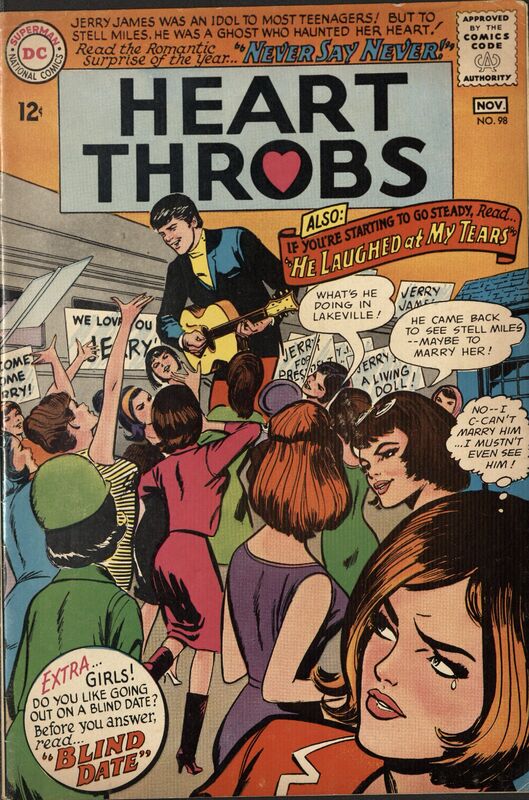
Heart Throbs. No. 98, DC Comics, 1965.
The cover features a story about a girl who falls in love with a fictional rock star named Jerry James. James costuming and the teenage fandom surrounding him brings to mind numerous 1960s teen idols. While some comic books refer to real rock stars, a fictional celebrity avoids accusations of defamation and gives the creators artistic license.
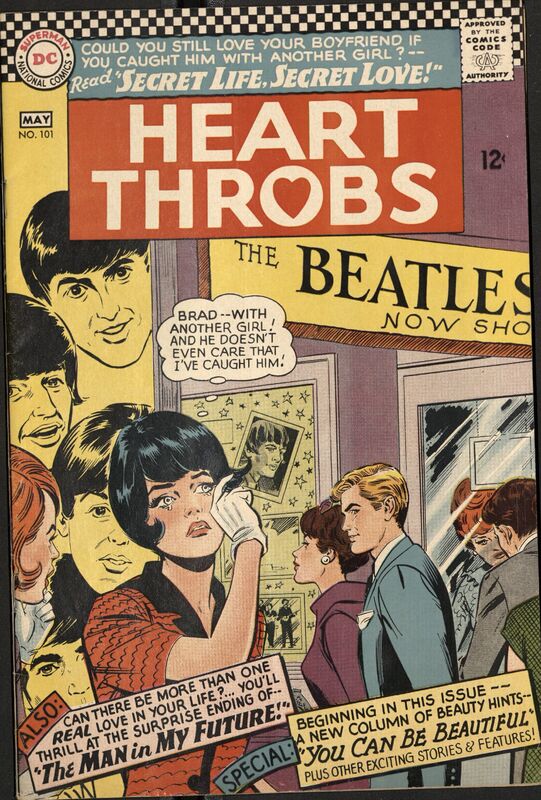
Heart Throbs. No. 101, DC Comics, 1966.
The cover promotes a story that takes place at a Beatles’ concert. The Beatles do not appear as characters in the story. The concert setting is a nod to pop culture at the time of the issue’s publication. 1966 was the tail-end of “Beatlemania” in the USA. "Beatlemania" refers to the group's intense fandom among preteens and teenagers, especially girls. Their last public show was performed in San Francisco in August 1966.
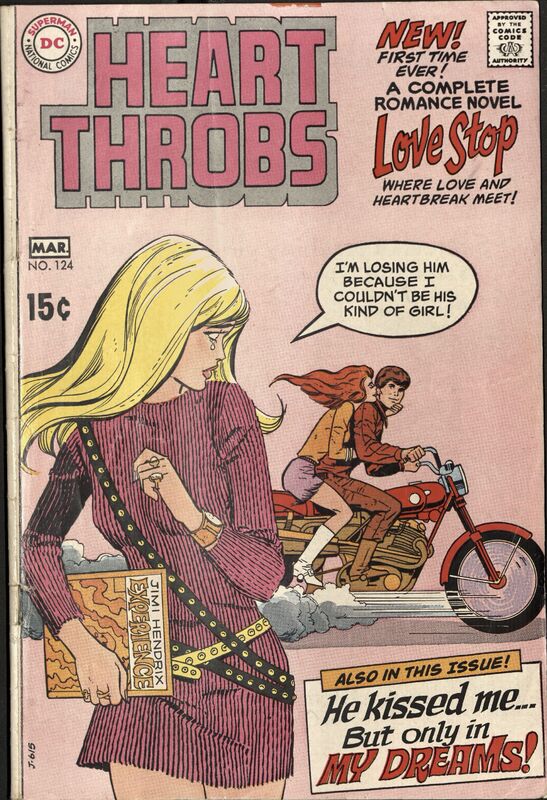
Heart Throbs. No. 124, DC Comics, 1970.
In the story, a “square” girl falls for an edgy biker. The cover depicts the romance heroine holding a record album for the Jimi Hendrix Experience while gazing longingly at the “cool” boy riding his motorcycle with another girl. Confusingly, the actual comic story art shows the girl with a Mozart album, demonstrating how old-fashioned and removed from counterculture she is. Jimi Hendrix headlined the Woodstock Music Festival in 1969, and he represented a wild and colorful rock-and-roll lifestyle, the type that our heroine longs to join.
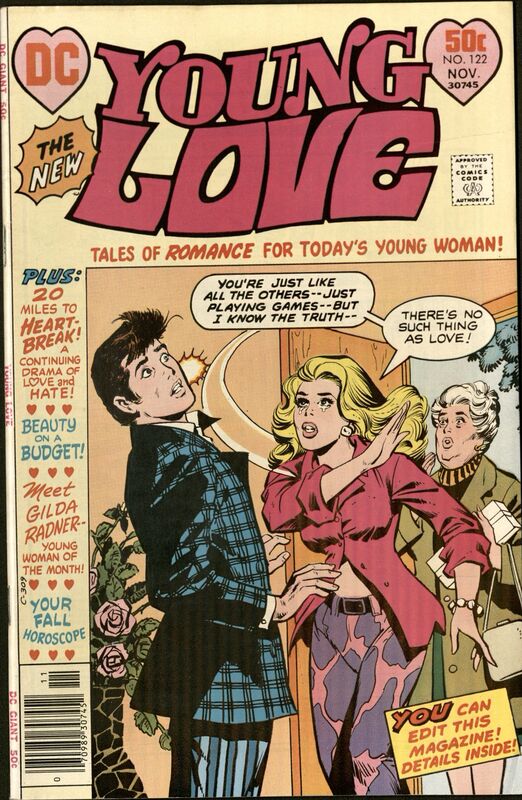
Young Love. No. 122, DC Comics, 1976.
The cover promotes an interview inside the issue with Gilda Radner, a comedian starring in NBC's Saturday Night! which later became Saturday Night Live in 1977.
In the interview, Gilda speaks about her new celebrity status as a result of being on the show, "People whisper when I go by them. I don't want them to whisper. I want them to say, ;Hi Gilda! It scares me, this responsibility to people. I don;t want to let anyone down. I just love to make people laugh.[...] I hope when I die that I die choking on a joke."